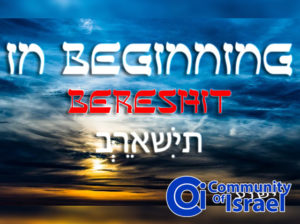 The Creative Power of YAHWEH
The Creative Power of YAHWEH
In the beginning God created the universe. As obvious as this statement may seem to all readers of the Bible, this is a tough concept to understand. There’s a lot to unravel about Genesis while trying to understand why it happened in the first place. How did God actually do it… How did one supreme and eternal spiritual Being bring about so much physical matter?
In The Beginning There Were Miracles
The Creation of the universe by God is the very first Bible story. We all assume that we know what happened, but very few people have thought about how Creation actually occurred. If we turn to the first page of the book of Bereshit (Genesis), we find that:
God is before, in existence, prior to the start of anything, and the author and creator of everything.
Through speech, He created. He uttered a command and things simply came into being. Can you imagine what this must have sounded like?
Bereshit, Bereishit, Bereshis, Bereishis, or B’reshith בְּרֵאשִׁית — Is the original Hebrew word for “in beginning” later translated as “Genesis” with the addition of “the” between “in” and “beginning”.
God’s Spoken Language
Visualize this: Nothing existed yet and in the dark void, a voice suddenly bellowed, “Let there be light!” Instantly, light shattered the cosmic darkness and space was illuminated. This is the first divine quotation in the whole Bible. But God, of course, did not speak English. The authentic words vocalized by God were first recorded in Hebrew: yehi or (יְהִי אוֹר).
The Power Of Words
Over the next six days, God created all things. He made a decree that came about and new elements were formed. The Hebrew language used to record such events carries to this day a universe of meaning and new understandings.
Do we really understand the reason behind this event and how it happened?
The Meaning Behind The Word
As mentioned above, Bereshit in Hebrew is written this way בְּרֵאשִׁית and each of its letters have their own meaning, and each combination of these letters speak of God’s omniscience and providence. Let’s take a look.
בְּרֵאשִׁית
בר These two letters together create the word Bar which means “son” as seen in Strong’s H1247, H1248 (primarily in Aramaic, but also in Hebrew, see Mishlei 31:2 saying, “What, my son? and what, the son (bar) of my womb? and what, the son (bar) of my vows?”) This is the language of the time in which the “son” would be born and also means “grain” and “pure” and “possessor of” as “bar-samkha” means “possessor of authority”.
א The letter Aleph, is the first letter of the Hebrew alphabet and represents Elohim as seen in Strong’s H430 starting with the aleph אֱלהִים. The word Elohim is the plural of El (or possibly of Eloah) and is the first name for God given in the Torah.
שׁית These three letters together create the word Shayit . This word has many meanings. Shayit can mean “thorns” as seen in Strong’s H7898; meaning a wild growth of briers (as if put on the field): — “thorns” as used also in Isaiah 5:6. Shayit is also used to mean “appointed” as the Son is “appointed” for this purpose (see Gen. 41:33). As well as “to lay down” as used in Ruth 4:16 (And Naomi took the child, and laid H7896 the child in her bosom, and became nurse unto it.)
ראשׁ These three letters together create the word Rosh which means “head” as seen in Strong’s H7218 and used in Genesis 40:16
ברש These three letters together create the word Brosh בְּרוֹשׁ which means “tree” or “timber” as seen in Strong’s H1265 and referenced as big timber (either fir or cypress) as mentioned in 1Ki 5:10 (5:24 in the Jewish Tanakh) “So Hiram gave Solomon timber of cedar and timber of cypress according to all his desire.”
In one word, we see multiple words saying:
“ The son of God, crowned with thorns upon His head, on a tree”
Then…
שי These two letters together form the word Shay which means a “gift” (offered as homage) as seen in Strong’s H7862 and used in Isaiah 18:7
ת Finally, the last letter is the letter “Tav”. A letter that represents covenant and originally looked like a small “t” or a cross
Therefore, the sequence we see in the first word “bereshit” says:
“The son of God, crowned with thorns upon His head, on a tree,
a gift of the covenant”
Conclusion
The word of God has a lot more to teach. To learn, we must embrace the word for what it is. We must understand and accept that God Himself chose the Hebrew language to review to us His knowledge of all things past, present and future. And His perfect plan, set for us, since the beginning.
Shalom,
Rabbi Douglas
